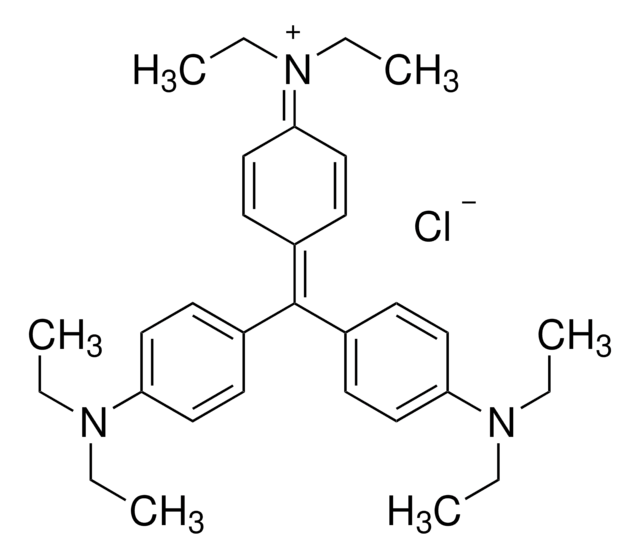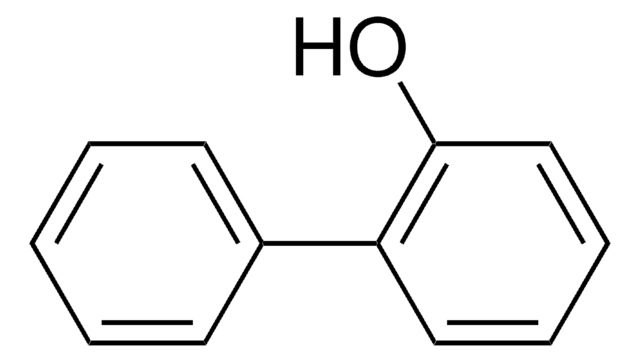262250
3-Phenylphenol
85%
Synonym(s):
3-Hydroxybiphenyl
Sign Into View Organizational & Contract Pricing
All Photos(3)
About This Item
Linear Formula:
C6H5C6H4OH
CAS Number:
Molecular Weight:
170.21
Beilstein:
1907938
MDL number:
UNSPSC Code:
12352100
PubChem Substance ID:
NACRES:
NA.22
Recommended Products
Quality Level
Assay
85%
mp
75-80 °C (lit.)
functional group
phenyl
SMILES string
Oc1cccc(c1)-c2ccccc2
InChI
1S/C12H10O/c13-12-8-4-7-11(9-12)10-5-2-1-3-6-10/h1-9,13H
InChI key
UBXYXCRCOKCZIT-UHFFFAOYSA-N
Looking for similar products? Visit Product Comparison Guide
Related Categories
Application
3 -Phenylphenol is a sensitive colorimetric reagent, used for the analysis of uronic acid.
Other Notes
remainder 4-phenylphenol
Signal Word
Warning
Hazard Statements
Precautionary Statements
Hazard Classifications
Eye Irrit. 2 - Skin Irrit. 2 - STOT SE 3
Target Organs
Respiratory system
Storage Class Code
11 - Combustible Solids
WGK
WGK 3
Flash Point(F)
Not applicable
Flash Point(C)
Not applicable
Personal Protective Equipment
dust mask type N95 (US), Eyeshields, Gloves
Choose from one of the most recent versions:
Already Own This Product?
Find documentation for the products that you have recently purchased in the Document Library.
Customers Also Viewed
Colorimetric determination of hexuronic acids in plant materials.
Scott RW.
Analytical Chemistry, 51(7), 936-941 (1979)
Cristóbal Narváez et al.
Chemosphere, 144, 775-784 (2015-09-29)
Effects of pesticides on non-target organisms have been studied in several taxa at different levels of biological organization, from enzymatic to behavioral responses. Although the physiological responses may be associated with higher energy costs, little is known about metabolic costs
Yuan Ma et al.
BioMed research international, 2019, 6917147-6917147 (2019-07-19)
'Eureka' lemon fruits were stored under four controlled atmosphere- (CA-) combinations at 8°C for 20 days to investigate the effects on weight loss (WL), total soluble solids (TSS), titratable acidity (TA), vitamin C (VC), total phenolic content (TPC), sodium carbonate-soluble
Hye-Ryung Park et al.
International journal of biological macromolecules, 99, 179-186 (2017-02-23)
To investigate the antitumor and antimetastatic polysaccharide from the mature leaves of green tea, GTE-II was purified using size exclusion chromatography. GTE-II consisted of 15 different sugars including rarely observed sugars such as 2-O-methyl-fucose, 2-O-methyl-xylose, apiose, aceric acid, 3-deoxy-d-manno-2-octulosonic acid
Michelle Palacios et al.
mBio, 9(4) (2018-08-09)
Klebsiella pneumoniae is widely recognized as a pathogen with a propensity for acquiring antibiotic resistance. It is capable of causing a range of hospital-acquired infections (urinary tract infections [UTI], pneumonia, sepsis) and community-acquired invasive infections. The genetic heterogeneity of K. pneumoniae
Our team of scientists has experience in all areas of research including Life Science, Material Science, Chemical Synthesis, Chromatography, Analytical and many others.
Contact Technical Service









